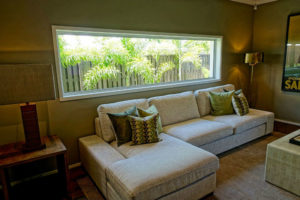A musty or stuffy home, with water condensing on pipes and windows is a sign of high humidity levels in your home. Running the common household appliances like a dishwasher, washing machine, or even activities such as taking a shower all contribute to moisture in the air. Not only is balanced humidity levels important for your family’s comfort, but also for their health and well-being. It can cause problems such as pests or even make you sick.
 Humidity simply refers to water or moisture in the air. Air is able to hold a certain amount of moisture and when it reaches saturation point, the effects are felt all around. It seems to dampen everything including your moods.
Humidity simply refers to water or moisture in the air. Air is able to hold a certain amount of moisture and when it reaches saturation point, the effects are felt all around. It seems to dampen everything including your moods.
There are different ones in the market to serve the varying needs in different homes. The two main types of dehumidifiers include;
- Desiccant Dehumidifier
- Refrigerant Dehumidifier
The most common type in the market today is the refrigerant type. They are generally composed of a fan, cooling coils, compressor and a water tank. These
Dehumidifiers Buying Guide
Different homes have different dehumidifier needs. The most popular ones in the market today are the portable dehumidifiers. You can find them in home improvement centers and bi box hardware stores. Here are the factors that you should take into consideration when choosing one for your home includes;
- Size
To pick a suitable size, you should know the square footage of the area/room you plan to dehumidify. You also need to have a rough idea of moisture levels in the area.
- Mobility
Dehumidifiers with casters are convenient as they can be moved from one room to the other. The unit can be placed anywhere in the house as long as you have a long power cord.
- Humidity Control
Automated controls are great for setting certain humidity levels and for monitoring. Some of the dehumidifiers have in-built hygrometers which measure the levels of relative humidity in your home. Those with humidistats allow you to set a desired level of humidity and the unit will maintain it. Optimal relative humidity should range between 30-50 percent in winter and 40-50 percent in the summer.
- Noise
It is advisable you test the noise levels of a dehumidifier before purchase. A two-speed fan dehumidifier will ensure reduced noise levels at a lower level of humidity. Noise can be a disturbance especially if it is close to the bedroom area.
- Water Capacity
The larger the capacity of the bucket, the more expensive the dehumidifier. Smaller buckets need to be emptied more often. Some dehumidifiers are self-draining while others employ the use of evaporation technology so no draining is required.
- Defrost Features
An automatic defrost feature is an absolute must for those living in areas with very low temperatures. It might be an additional cost but it saves you from expensive future expenses of damaged units from iced coils.
- Auto Shut Off Feature
When the tub is full, a dehumidifier with this feature will have an overflow protection valve causing the unit to switch off. This will indicate that the tab needs to be emptied. Some contain indicator lights to signal a full bucket.
- Washable Filters
A more economical option would be to get washable filters which are more durable. They are more convenient as they allow you to do fewer filter replacements. Washing should be done at least twice a month.
- Energy Efficient
Dehumidifiers certified by Energy Star Label are guaranteed to save you some money on utility bills. This applies to the government sponsored ones as well which consume less energy but still maintain optimum functionality.